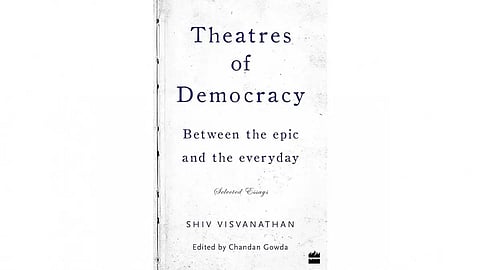Mayawati’s search for monumentality is interesting. The Indian democratic state hardly builds monuments except as PWD structures. Our great monuments are either Mughal or colonial, as witnessed by the Taj, Red Fort or Lutyens’ Delhi. Our idea of memory does not extend to monuments.
Mayawati: ‘Dalit Bollywood In Politics’
Mayawati is shrewd enough to realise that there will be no archives for her, no equivalent of the Nehru Museum. She has created no future dynasty but she has a sense that she belongs to a genealogy of power.
The great Gates of Bombay and Delhi are odes to war and empire. Our tragedies like Bhopal or the even the partition have no monuments. Memory is still scratched in the hearts of the survivors. The statues that the Congress, CPM or BJP build are forgettable affairs. Sculpture was never the style of these parties. But Mayawati is different.
She is shrewd enough to realise that there will be no archives for her, no equivalent of the Nehru Museum. She has created no future dynasty but she has a sense that she belongs to a genealogy of power. Her sense of political ancestry is more important than her sense of dynasty. She realises that both the Dalits and she need to create an alternative idea of history monumentalised into public space in a way that cannot be easily erased.
She is sensible enough to realise her following is mostly illiterate. But she has a sense of popular culture of what I call Dalit Bollywood in politics. She realises that it was filmland which bought egotism to politics. It was MGR and NTR who through the film hoardings or their samadhis created a sense of power.

But there is a deeper truth. It is that power corrupts and distorts both Dalit, OBC and Brahmin. The park is a reminder of that lesson. It is not just a lesson in history, as Mayawati thinks. It is a lesson about history and politics. Power corrupts and electoral power corrupts through monumentality. It does not make a difference whether you are Indira, Mayawati or Modi.
Maybe some Dalit poet should render a version of Percy Shelley’s Ozymandias. It is about the evanescence of power and the erosion of all monumentality.
“Two vast and trunkless legs of stone
Stand in the desert. Near them on the sand,
Half sunk, a shattered visage lies, whose frown
And wrinkled lip and sneer of cold command
Tell that its sculptor well those passions read
Which yet survive, stamped on these lifeless things, …
Nothing beside remains. Round the decay
Of that colossal wreck, boundless and bare,
The lone and level sands stretch far away”.
(Excerpts from Theatres of Democracy: Between the epic and the everyday; Selected Essays; Shiv Visvanathan; Edited by Chandan Gowda)